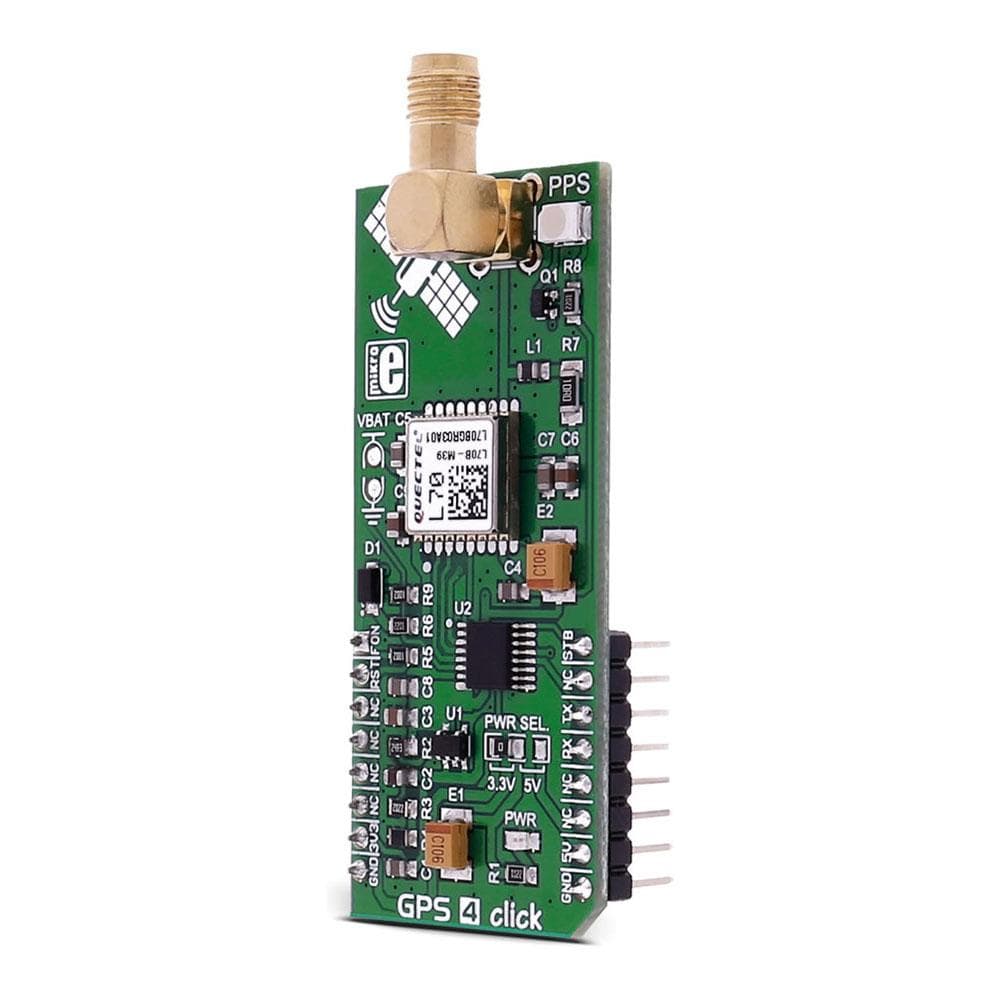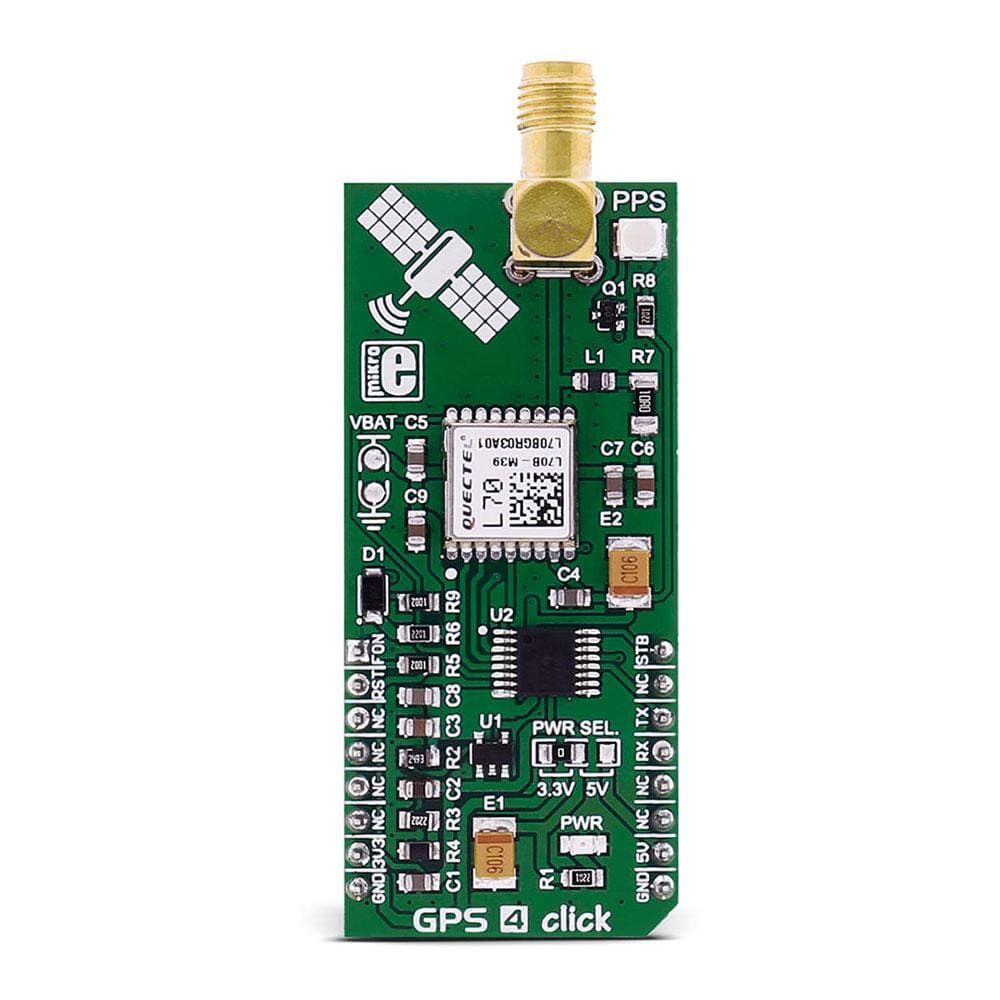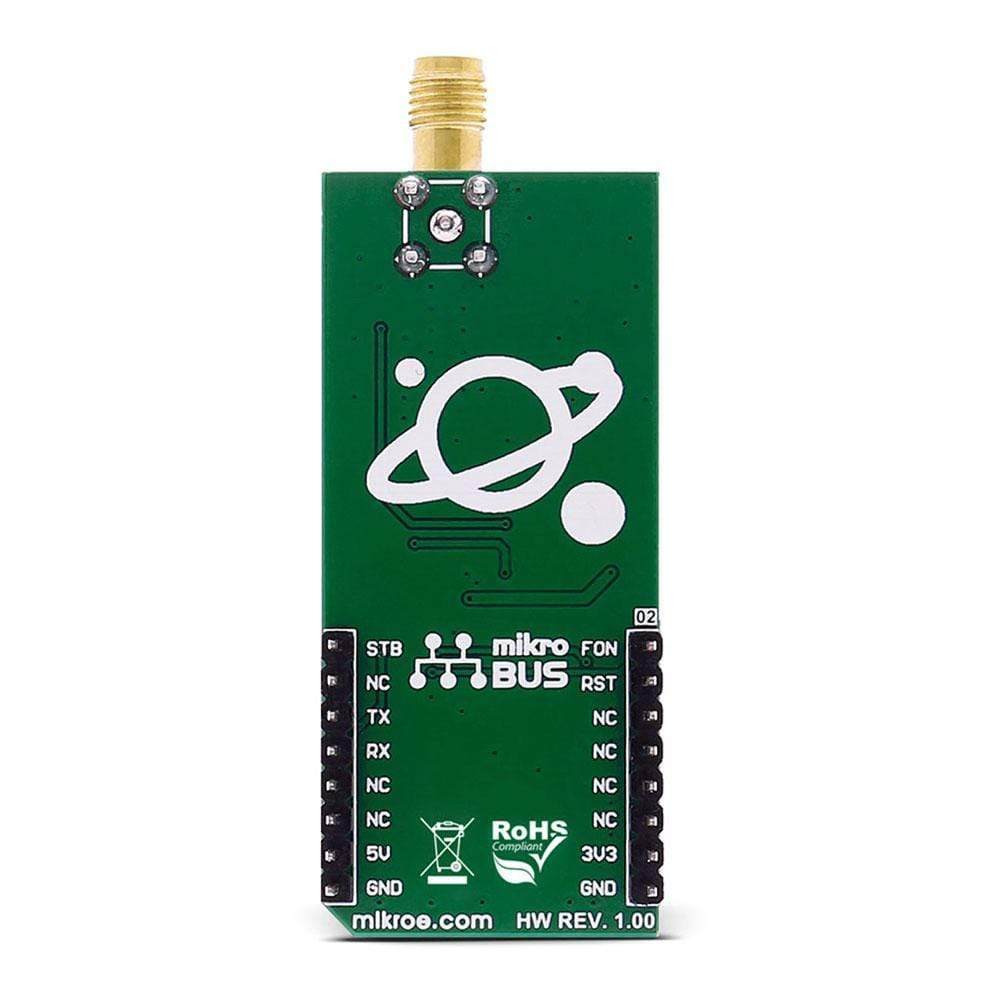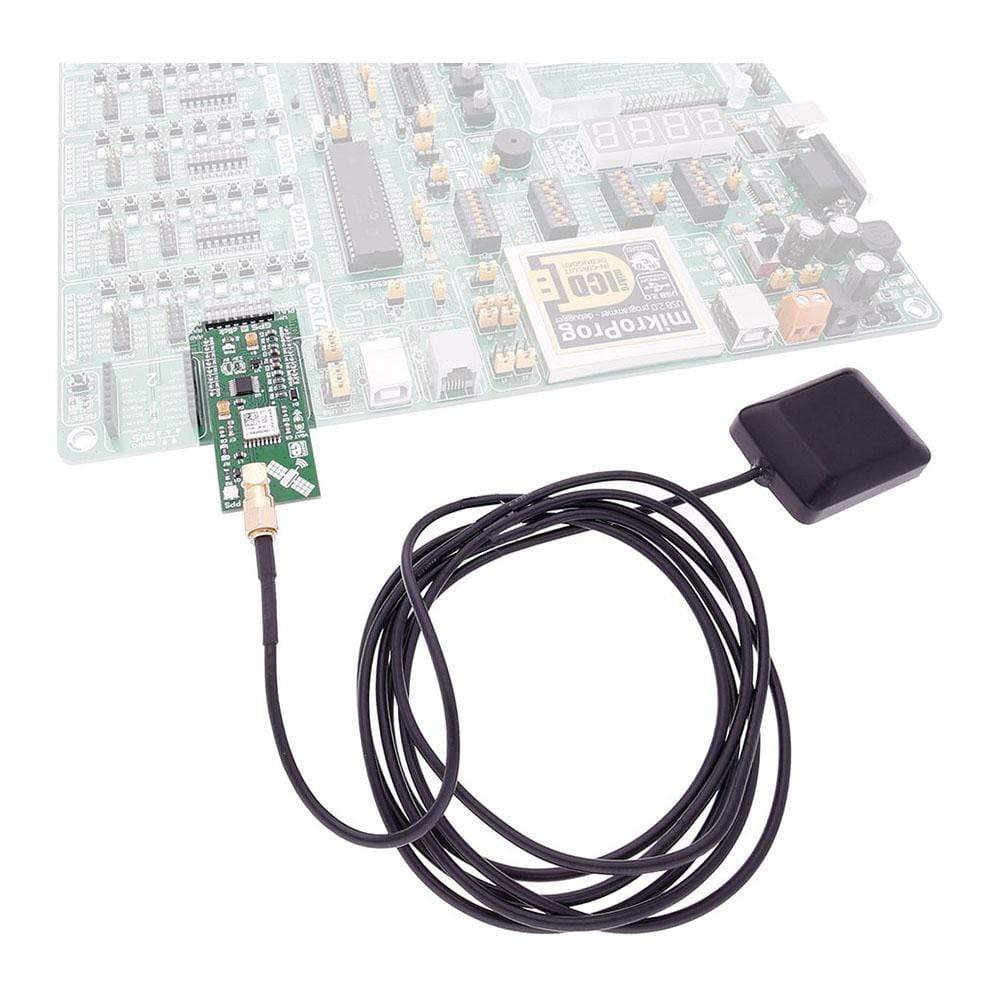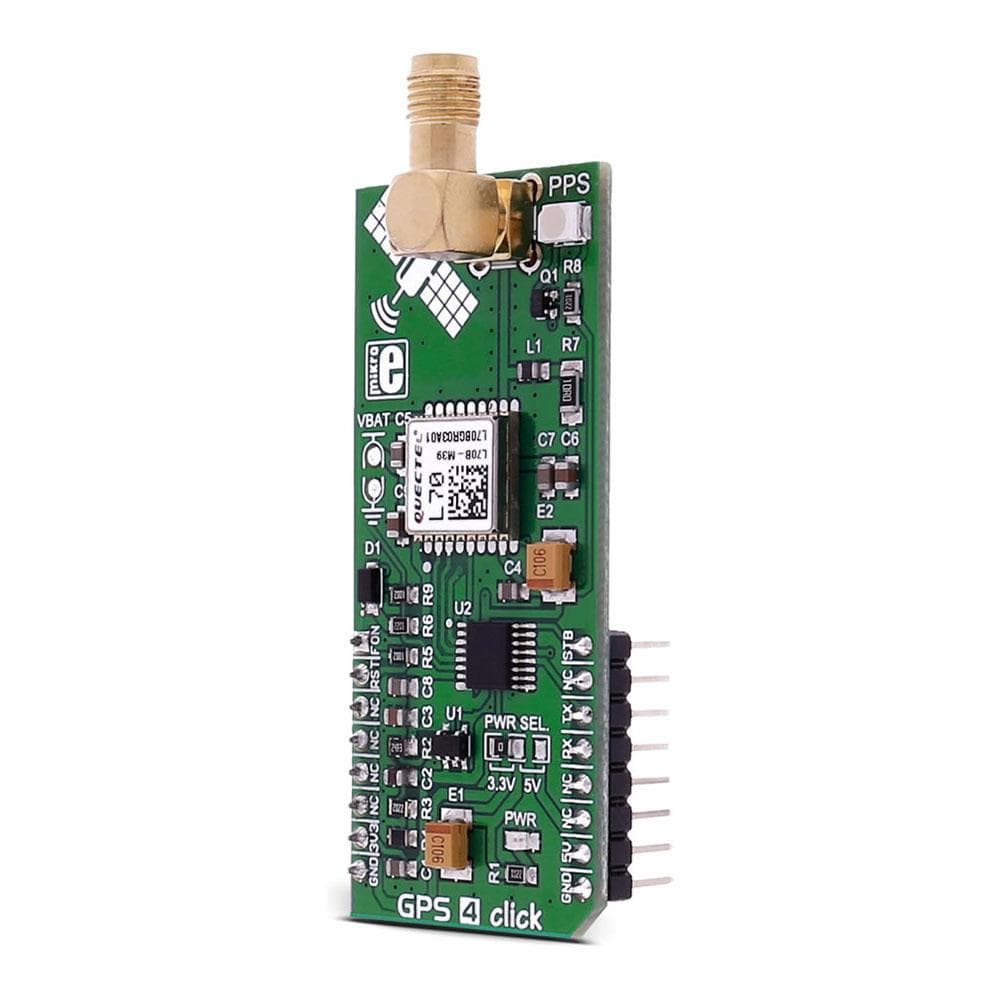
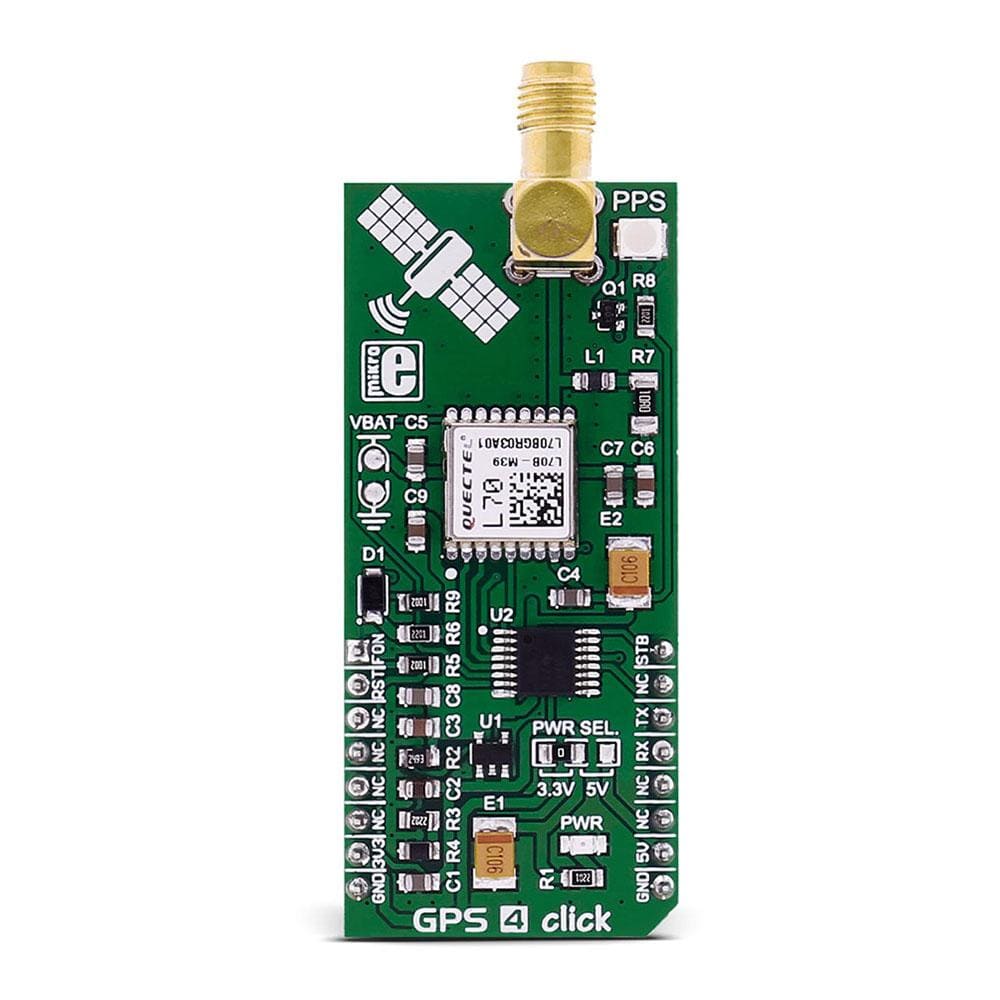
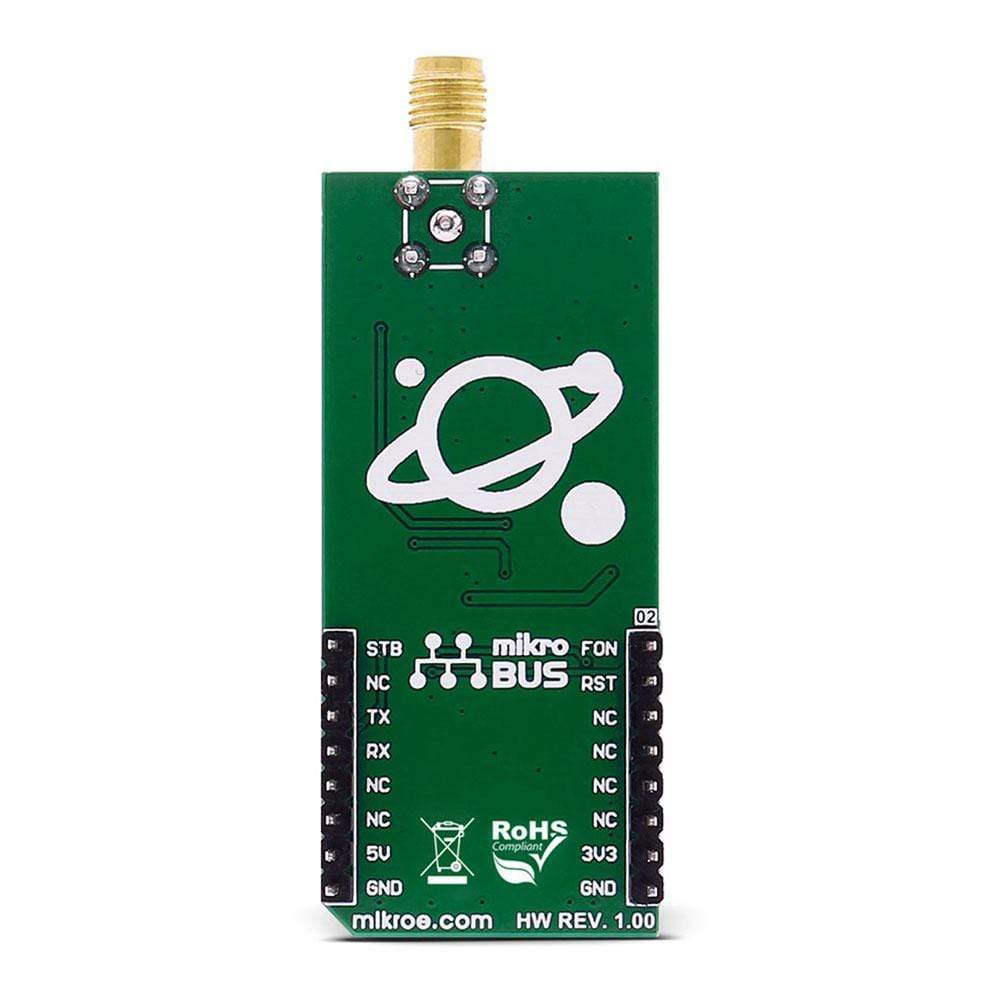
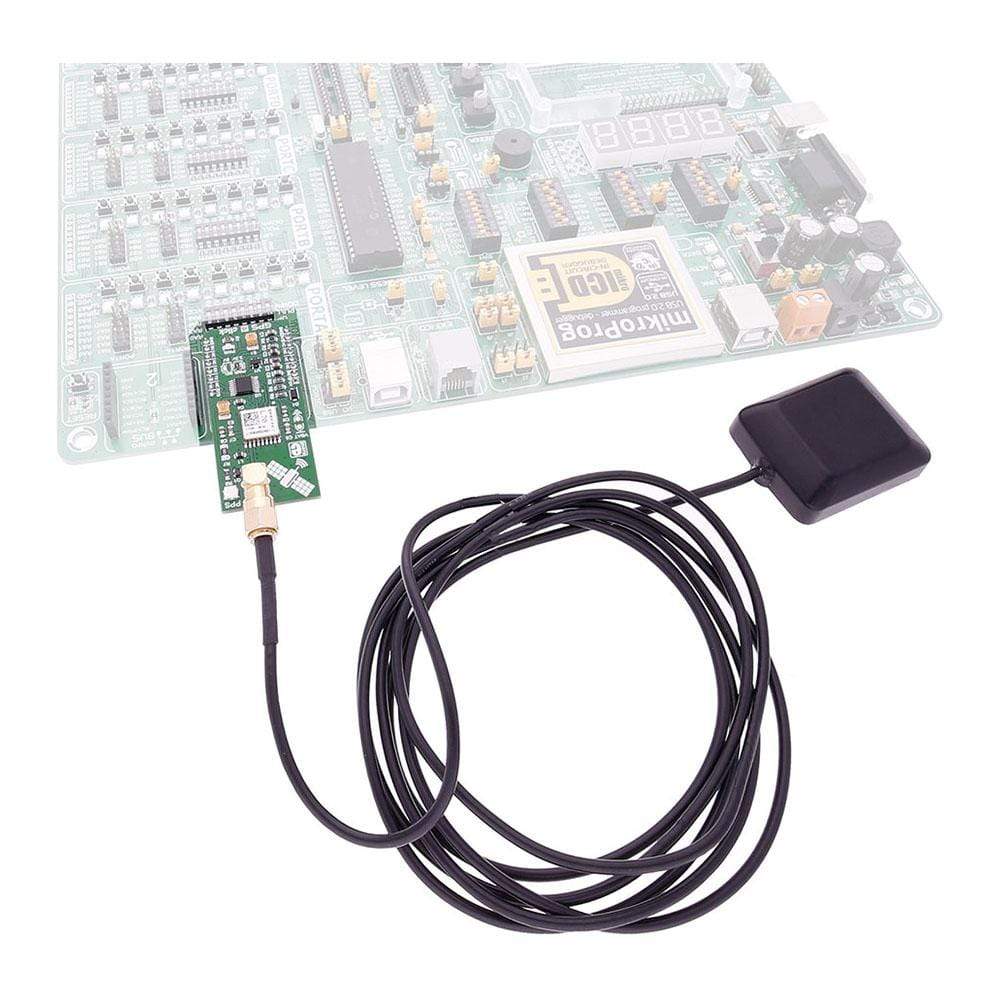
Overview
The GPS 4 Click Board™ carries the L70 compact GPS module from Quectel. The Click Board™ is designed to run on either a 3.3V or 5V power supply.
It communicates with the target microcontroller over the UART interface, with additional functionality provided by the following pins on the MikroBUSline: PWM, AN, RST.
Downloads
Das GPS 4 Click Board™ enthält das kompakte GPS-Modul L70 von Quectel. Das Click Board™ ist für den Betrieb mit einer 3,3-V- oder 5-V-Stromversorgung ausgelegt.
Es kommuniziert mit dem Zielmikrocontroller über die UART-Schnittstelle, wobei zusätzliche Funktionen durch die folgenden Pins auf der MikroBUS-Leitung bereitgestellt werden: PWM, AN, RST.
| General Information | |
|---|---|
Part Number (SKU) |
MIKROE-2704
|
Manufacturer |
|
| Physical and Mechanical | |
Weight |
0.03 kg
|
| Other | |
Country of Origin |
|
HS Code Customs Tariff code
|
|
EAN |
8606018710980
|
Warranty |
|
Frequently Asked Questions
Have a Question?
Be the first to ask a question about this.

